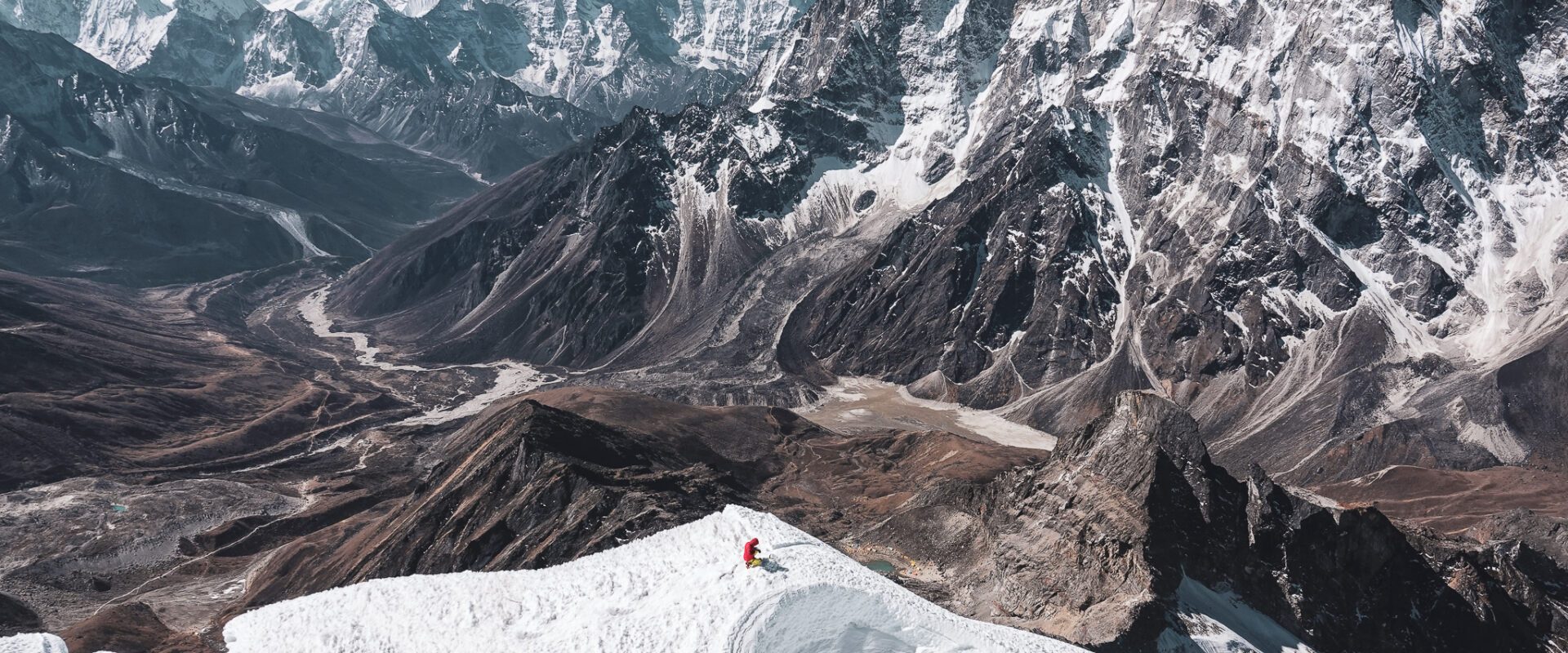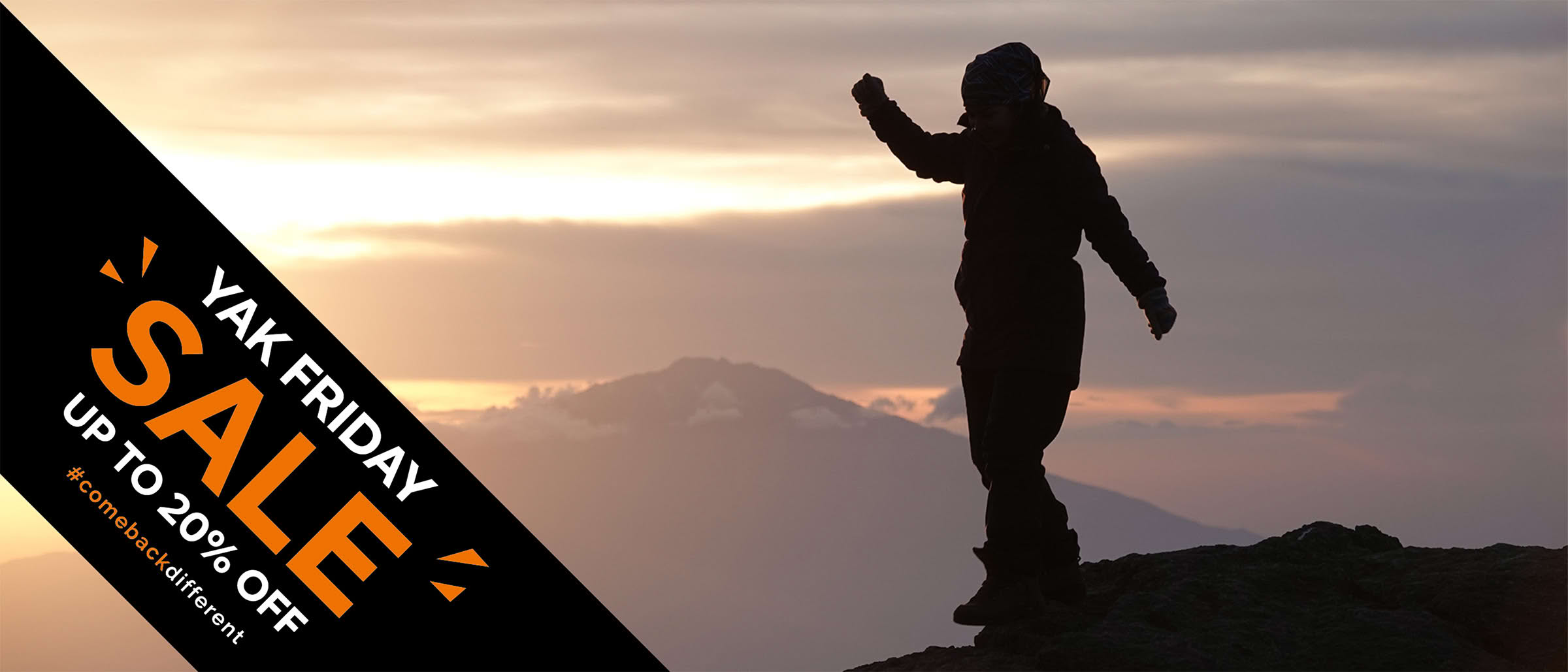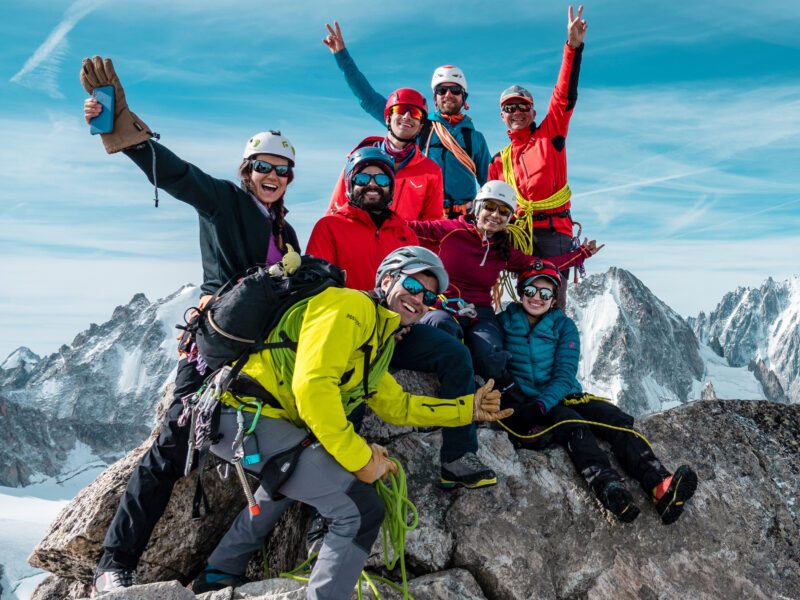BY Hazem El Shamy | September 15 2025
The Ultimate Guide to Climbing Lobuche Peak

Understanding Lobuche Peak
Lobuche Peak rises above the Khumbu Valley with two distinct summits: Lobuche East (6,119 m) and Lobuche West (6,145 m). Of the two, Lobuche East is the permitted trekking peak, while Lobuche West is a true expedition climb. For most adventurers, Lobuche East is the goal, offering an alpine challenge paired with incredible views of Everest, Lhotse, and Ama Dablam.
Why Climb Lobuche Peak
Climbing Lobuche East is often paired with the trek to Everest Base Camp, making it a perfect extension to a journey already filled with Himalayan highlights. The climb is more demanding than Island Peak, requiring greater technical awareness and stamina, but it rewards you with a genuine mountaineering experience on steep snow slopes and knife-edge ridges.
The Route to the Summit
The approach follows the classic Everest Base Camp trail before branching toward Lobuche village. From there, climbers move to Lobuche Base Camp and then to High Camp at around 5,400 meters. Summit day begins before dawn with steep rocky ground leading to a snowfield, then a sustained climb on 40–50 degree slopes before reaching the summit ridge.
Skills You Need
Climbers attempting Lobuche Peak should be comfortable with:
- Moving efficiently in crampons on mixed rock and snow
- Using fixed ropes with a jumar on steep sections
- Abseiling or rappelling safely on descent
Unlike Island Peak, the final ridge can be more exposed, requiring both balance and confidence.
Physical Preparation
Lobuche demands strong endurance and resilience. Training should include:
- Long hikes with weight to mirror summit day effort
- Strength training for core and legs, especially for steep climbs
- Cardio for sustained performance at altitude
Previous high-altitude trekking or climbing experience is highly recommended before attempting Lobuche.
Best Season to Climb
The prime climbing seasons are spring (April–May) and autumn (October–November). In spring, warmer temperatures and busier trails are balanced by clearer summit conditions. Autumn brings colder nights but stable weather and fewer climbers.
Gear Checklist
Key equipment for Lobuche includes:
- Mountaineering boots and crampons
- Ice axe, climbing harness, and helmet
- Jumar and figure-eight descender
- Insulated clothing layers and expedition-grade sleeping bag
Much of the technical gear can be rented in Kathmandu, but personal boots and outerwear should always be your own.
Life at Base and High Camp
At Base Camp, around 4,950 meters, climbers rest, train, and acclimatize. High Camp is a smaller staging point closer to the climb, where meals are simple and tents are perched against the mountain. Nights are cold and short, with early wake-ups for summit pushes.
The Summit Experience
The climb to Lobuche’s summit is challenging but deeply rewarding. The views from the ridge reveal Everest, Lhotse, Makalu, and Ama Dablam—an entire panorama of Himalayan giants. Standing on the summit, you feel part of the high Himalaya, with a sense of achievement that comes from both effort and endurance.
After the Climb
Most itineraries include time to descend gradually through the Khumbu, revisiting villages like Pangboche and Namche Bazaar. This descent is a chance to celebrate, recover, and reconnect with the local culture before returning to Kathmandu.
Final Thoughts
Lobuche Peak offers one of the best introductions to technical Himalayan climbing. It demands preparation, skill, and determination, but rewards climbers with unforgettable views and a deeper understanding of mountaineering in the world’s highest mountains. For those ready to push beyond trekking peaks, Lobuche is a challenge worth taking on.
About The Author
Hazem is an avid high altitude mountaineer and adventurer that has helped lead hundreds of climbers to summits across the Himalayas, Andes, Atlas, and Caucus mountain ranges. He believes that inspiration is best served on a sharp ridge 6000 meters up in the sky, and is committed to making big mountain goals more achievable to the everyday climber.
About Life Happens Outdoors
At Life Happens Outdoors, we believe in the power of nature to transform lives. As proud members of the Adventure Travel Trade Association (ATTA) and the World Travel & Tourism Council (WTTC), our team of certified guides and outdoor professionals is committed to the highest standards of safety, sustainability, and excellence.
Discover more about our story and mission on our Meet LHO page, or explore our curated adventures such as the Tour du Mont Blanc Trek, the Climb of Kilimanjaro, and Chasing the Northern Lights.















